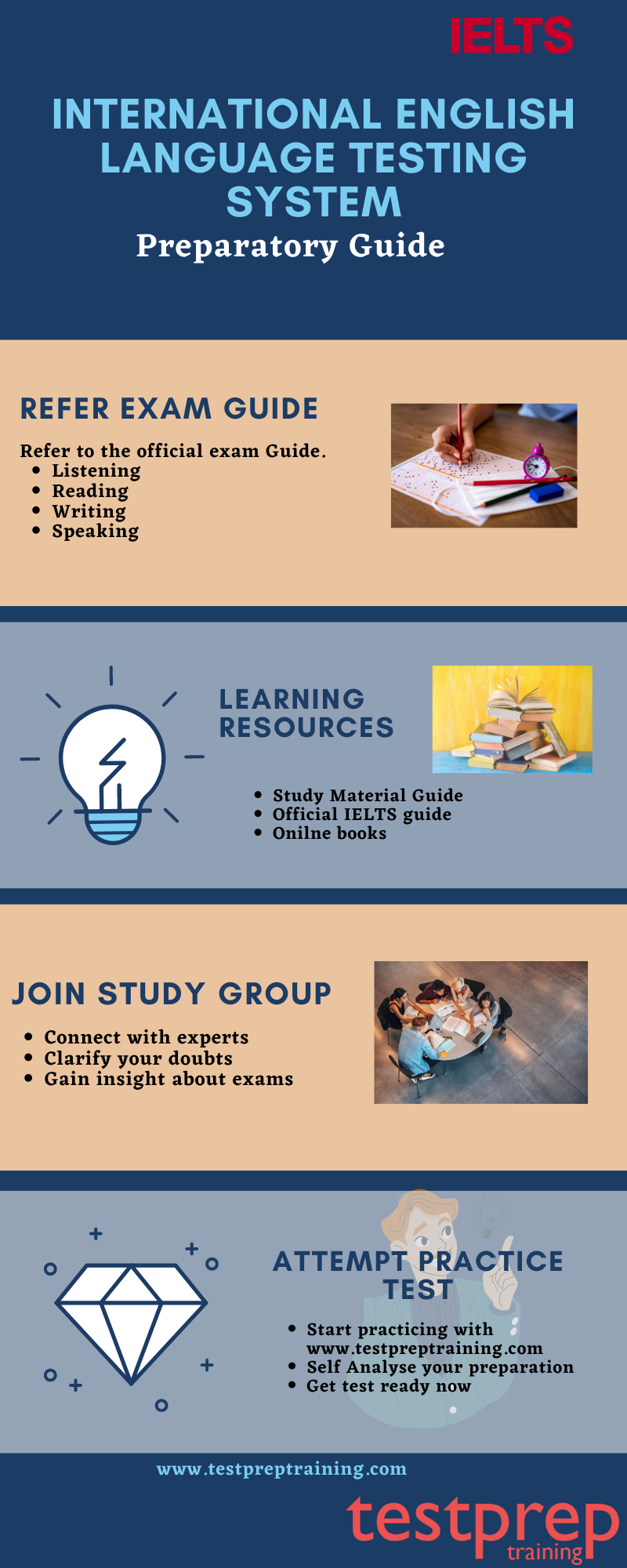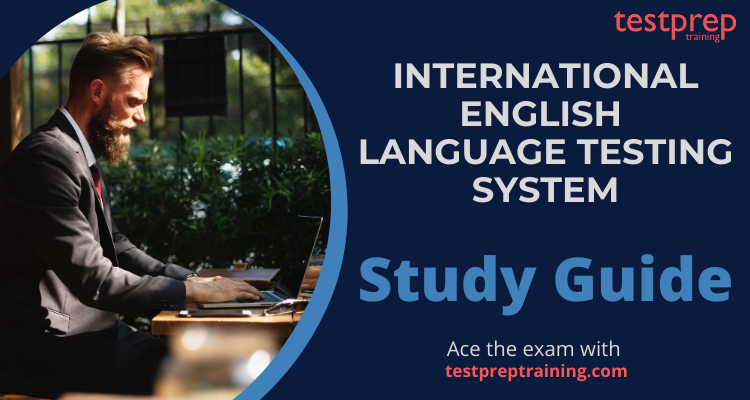The International English Language Testing System (IELTS) examination is the world’s most accepted and demanding English Language proficiency test. The examination test’s a candidate’s ability to read, write, listen, and speak clearly in English language. The IELTS exam is widely recognized for higher education and global migration purposes. It is a collaboration between the British Council, IDP: IELTS Australia, and Cambridge Assessment English. Governments of countries like Australia, Canada, New Zealand, and the United Kingdom rely on IELTS for processing immigration applications.
However, clearing the exam is not so easy. Further, this exam requires preparations from expert guidance and genuine resources. Moreover given its vast syllabus makes it a hard nut to crack. To solve that out, we present you with Step by step Study Guide that will aid your journey towards this certification.
Target Audience: IELTS
The International English Language Testing System is especially to check and assess the English language proficiency of the candidates who wish to study abroad or are willing to work outside their country. This exam can also be taken by those candidates who wish to settle with their spouse or children who are living abroad in an English speaking country.
IELTS Score
IELTS exam scores are provided on a scale known as band scores, ranging from 1 (the lowest) to 9 (the highest). Below, you’ll find detailed information about how the IELTS examination is scored.
| Band score | Skill level | Description |
|---|---|---|
| Band 9 TO 7 | ||
| 9 | Expert user | The person taking the test has a thorough command of the language. Furthermore, their use of English is fitting, precise, and smooth, demonstrating a full understanding. |
| 8 | Very good user | The test taker possesses a strong command of the language, making occasional unsystematic errors and inappropriate use. They might have some misunderstandings in unfamiliar situations but handle complex arguments well. |
| 7 | Good user | The test taker has operational command of the language, though with occasional inaccuracies, inappropriate usage and misunderstandings in some situations. They generally handle complex language well and understand detailed reasoning. |
| Band 6 TO 1 | ||
| 6 | Competent user | The person taking the test has a good grasp of the language, although there may be some mistakes, inappropriate use, and misunderstandings. They can use and understand fairly complex language, especially in situations they are familiar with. |
| 5 | Modest user | The person taking the test has a limited command of the language and manages to understand the main idea in most situations, even though they might make many mistakes. Additionally, they should be capable of basic communication within their own field. |
| 4 | Limited user | The person taking the test is only competent in familiar situations. They often face difficulties in understanding and expressing themselves, and they are unable to use complex language. |
| 3 | Extremely limited user | The test taker conveys and understands only general meaning in very familiar situations. Also, there are frequent breakdowns in communication. |
| 2 | Intermittent user | The test taker has great difficulty understanding spoken and written English. |
| 1 | Non-user | The test taker has no ability to use the language except a few isolated words. |
| 0 | Did not attempt the test |
Study Guide for IELTS Exam
You must have the right information and tools to crack the exam. Moreover, this Study Guide presents the detailed view of the best learning resources. Follow the steps to enhance your knowledge and move closer towards your certification

Step 1- Refer the Exam Guide
In order to gain a systematic understanding of the exam, you should go through the exam blueprint that would assuredly provide a bird`s view on all related topics. The details of the exam structure, exam results, registration, retakes, and the scope of the syllabus are also given in detail. Knowing the exam objectives is very important to get an insight into the exam. So visit the Official website, to have a clearer view of the exam guide. A thorough analysis of the exam blueprint will let you align yourself more deeply with the chief objectives if the exam
Components of IELTS
The IELTS examination consists of four modules. However, it is important for the test taker to appear in all the four modules, or else the final band won’t be given and the result will become invalid. Below is a brief description of all the four modules:
Firstly, Listening
The listening examination is of 30 minutes. It consists of four sections. The audio dialogue or monologue is played on cassette tape and you will be given headphones for the exam. However, the test is played only once and students should answer each question while listening to the audio itself. But an ample amount of time is given to the candidate for reviewing their answers.
Secondly, Reading
Test-takers have 60 minutes to finish the exam. They can choose between an Academic Reading test or a General Training Reading test. Both tests have three sections, and the difficulty of the sections increases as you go through them.
Thirdly, Writing
The writing section is of 60 minutes. Moreover, depending upon the module chosen by the student which can be either academic or general training, students must perform two writing tasks, which require different styles of writing. Also, there is no choice of question topics
Lastly, Speaking
The speaking section involves a one-on-one interview with an examiner, which is recorded and consists of three parts: an introduction and interview, an individual long turn where the candidate talks about a specific topic for one or two minutes, and a two-way discussion related to the individual long turn. This interview takes around 11-14 minutes.
Step 2- Learning Resources
There are plenty of online and offline study resources available for the preparation this exam. You should definitely refer all these study resources and choose the one that best suits you. The next step to success is to practice. The IELTS examination having 4 modules require practice at a different level. You can practice from official guides. Also, many books and online resources available for the same. IELTS has developed two sets of official practice materials, designed to help you understand the test format and the types of test questions.
Join Study groups
Getting involved in study groups is a great way to immerse yourself in the certification exam you’ve signed up for. These groups keep you informed about any recent changes or updates to the exam. They include both beginners and experienced professionals. Plus, you can freely ask questions or discuss the exam without any hesitation.
Step 4- Practice Tests
No matter how you get ready for the IELTS Exam, doing a practice run or two can benefit you in unexpected ways. Taking a practice test adds variety to your study routine and ensures optimal results for the actual exam. Analyzing your answers pinpoints areas that need extra attention and aligns you with exam objectives. It’s crucial to attempt multiple tests to enhance your confidence. Lets Start Practising for the exam Now!



